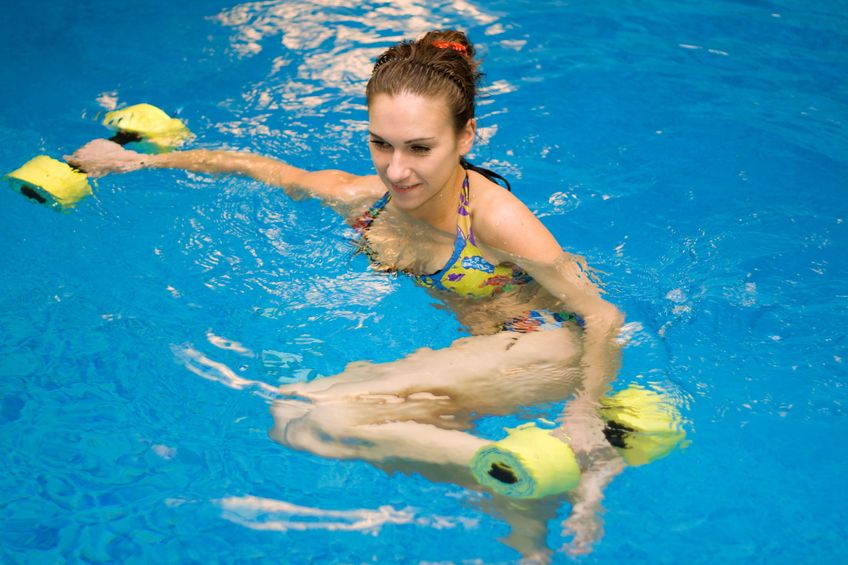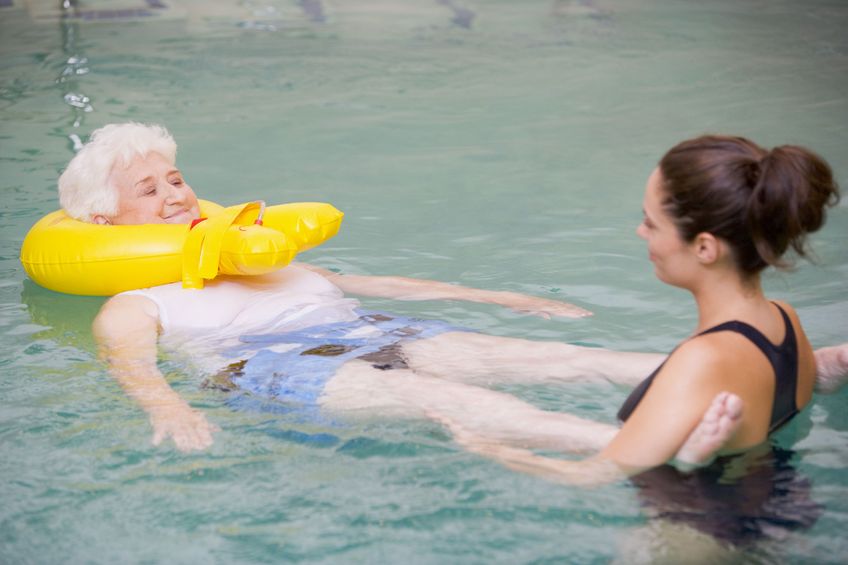Water Therapy: Fun and Beneficial

Tid Bits of Info
- Always get the approval from your doctor to begin any kind of exercise program.
- A water routine can be performed in any depth of water. There are specific floatation devices made that help in deep water.
- Expect to be “muscle sore” after the first couple of sessions. These muscles are performing in a way that they are not used to.
- Any movement in the water can be therapeutic. You do not need to attend an organized class, but sometimes these are more fun and motivating.
- Ask your Physical Therapist for suggestions of exercises in the water that will help with your condition.
Exercising in the water can be enjoyable and therapeutic at the same time. Water therapy exercise for chronic illnesses and rehabilitation provides a positive alternative to land-based therapy programs. Physical limitations may prevent some people from participating in common land-based programs, but these same people may experience tremendous benefits in a water-based program that is performed on a regular basis.
Water Can Overcome Limitations
Physical Therapist often recommend water therapy for patients who have limiting conditions such as Osteoarthritis, joint pain, poor cardiovascular condition, chronic pain in the back and other areas, spinal cord injuries, amputations, nearly all neurological disease, brain injuries and many orthopaedic injuries to the upper and lower extremities. The effects of gravity can make a land-base program too extreme for many of these patients, but a water-based program can alleviate the challenges of gravity. Many people can be fully rehabilitated in a water therapy program.
Water Therapy Exercise Routines
Physical Therapists design water-based exercise routines to build strength, endurance, flexibility and help stimulate the neuromuscular activity in a given body part. These goals are identical to those of a land-based program.
The advantages of water are well documented, but the most purposeful one in the outpatient orthopaedic setting is the water’s ability to make someone buoyant. The effect of gravity is lessened and the body and body parts weigh less. As a result, a person can move more freely and in some cases to bear weight in a manner that is not allowed on land. Problems like an injured shoulder will be better suited for the act of “lifting and raising” of the arm when the arm is in the water.
The buoyancy increases as a patient goes deeper in the water. This means the body and body parts become light as a patient is submersed deeper. This is extremely important when someone has an injury that requires a transition from non-weight bearing to full weight bearing. Most doctors and Physical Therapists agree that the water therapy enhances this transition and when possible water routines should be used as a viable form of formal Physical Therapy rehabilitation. Since their limbs are light, patients can move more easily and exercise for a longer period of time. The lack of increased pain makes it more enjoyable to perform the routine, and they are more likely to participate more frequently.
Water Therapy Can Soothe Pain
In many cases the ability to perform the routine in a warm water environment helps to sooth painful joints and muscles. The constant stimulation of the sensory nerve endings in warm water can help decrease painful signals that are being sent from the involved body part(s). By reducing the pain, patients can move body parts more easily and increase their strength, endurance and flexibility. The core control is constantly stimulated from being submerged in water, increasing neuromuscular activity in areas that have been injured. The constant stimulation of the sensory nerve fibers helps to “prepare” the muscles to be more active.
Water also provides continuous resistance. The resistance that water provides to an injury site is due to viscosity and friction. This type of resistance is gentle and in some cases almost soothing. This resistance can also help a person to develop more strength and endurance.
Water therapy can be fun and efficient at the same time. The success of this type of program is similar to a land-based program. The regimen must be performed consistently and often. The reduction of symptoms will directly correlate to the amount of time that is spent working on the routine. Almost anyone with any diagnosis can benefit from a well-designed water therapy program.

























